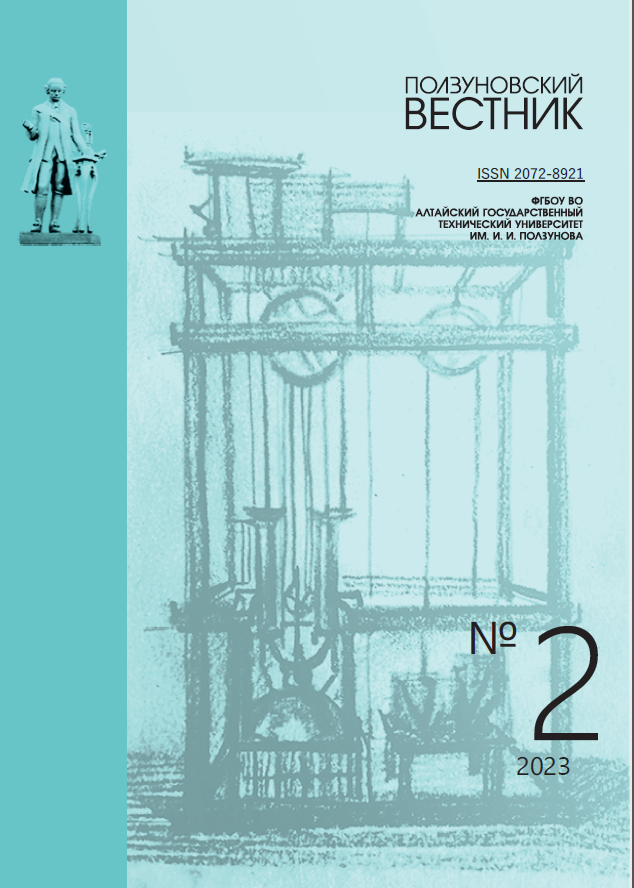THE USE OF MELON PROCESSING PRODUCTS IN THE PRODUC-TION OF MARMALADE
KGBUNX
DOI:
https://doi.org/10.25712/ASTU.2072-8921.2023.02.012Keywords:
marmalade, by-products of watermelon processing, gelatin, agar-agar, pectin, carrots, , rosehipAbstract
The purpose of this study is to develop marmalade with the addition of carrots and rosehip tinctures containing a significant amount of vitamins and minerals that play an important role in improving immunity. The acidity was determined in accordance with GOST 5898-87. The determination of humidity was carried out on a moisture meter MX-50. The content of dry substances and sucrose was determined on a refractometer SNEL-104. The study of the use of by-products of watermelon processing in the production of marmalades with the use of various jelly-making agents showed that pectin, agar-agar and gelatin are suitable for use as gelling agents in the production of marmalade. The technology of preparation of marmalade products in the fractionation of raw materials into juice and pulp in a ratio of 90:10 has been developed. The improvement of taste and consistency was revealed due to ultrasonic processing of vegetable raw materials on a homogenizer. Laboratory samples of marmalades were made with the addition of various dosages of fillers - carrots and rosehip tincture. It was found that the addition of rosehip tincture of more than 10% gives the finished products a sour taste and the addition of carrots over 20% worsens the color, taste and consistency of the products. The best indicators for physico-chemical and organoleptic indicators are marmalades with a juice-pulp ratio of 90:10 with the addition of carrots up to 20% and rosehip tincture up to 10%.
References
Miranda, J. S., Costa, B. V., de Oliveira, I. V., de Lima, D. C. N., Martins, E. M. F., de Castro Leite Júnior, B. R. & Martins, M. L. (2020). Probiotic jelly candies enriched with na-tive Atlantic Forest fruits and Bacillus coagulans GBI-30 6086 // LWT-Food Science and Technol-ogy. – 2020. – Vol. 126. – p. 109275. DOI: 10.1016/j.lwt.2020.109275
Г.Е. Жумалиева, У.Ч. Чоманов,Г.С. Актокалова, М.А. Идаятова, Д.Б. Муратханов, Н.З. Тултабаев. Производство кондитерских изделий с применением продуктов перера-ботки бахчевых культур. Аграрий Казахстана (Казахстанская сельскохозяйственная газета). – 2022. https://abkaz.kz/proizvodstvo-konditerskix-izdelij-s-primeneniem-produktov-pererabotki-baxchevyx-kultur/
Escobedo-Avellaneda, Z., Gutierrez-Uribe, J., Valdez-Fragoso, A., Torres, J. A., & Welti-Chanes, J. Phytochemicals and antioxidant activity of juice, flayed, albedo and comminuted orange // Journal of Functional Foods. – 2013. – Vol. 6(1). – p. 470-481. DOI: 10.1016/j.jff.2013.11.013.
Al-Sayed H. & Ahmed A.R. Utilization of watermelon rinds and sharlyn melon peels as a natural source of dietary fiber and antioxidants in cake // Annals of Agricultural Sciences. – 2013. – Vol. 58(1) – 83–95. DOI: 10.1016/j.aoas.2013.01.012
Медведев Г.А., Цепляев А. Н. Бахче-водство: учебник - 2-е издание, Санкт-Петербург: Лань. – 2014. – 192 c.
Кулбаев А. (2018). Громкое эхо «Кауын феста». https://yujanka.kz/gromkoe-eho-kauyn-festa/
Oberoi D. & Sogi D. Utilization of water-melon pulp for lycopene extraction by response surface methodology // Food Chem. – 2017. – Vol. 232. – p. 316-321. DOI: 10.1016/j.foodchem.2017.04.038
Rimando, A. M. & Perkins-Veazie, P. M. Determination of citrulline in watermelon rind // Journal of Chromatography A. – 2005. Vol. 1078(1-2). – p. 196–200. DOI: 10.1016/j.chroma.2005.05.009
Downloads
Published
How to Cite
Issue
Section
License
Copyright (c) 2023 Urishbai C. Chomanov, Gulzhan Е. Zhumaliyeva, Gulnara S. Aktokalova, Marzhan A. Idayatova, Dulat B. Мuratkhanov, Gaziza T. Zhumaliyeva

This work is licensed under a Creative Commons Attribution 4.0 International License.















 .
. This work is licensed under a
This work is licensed under a 
